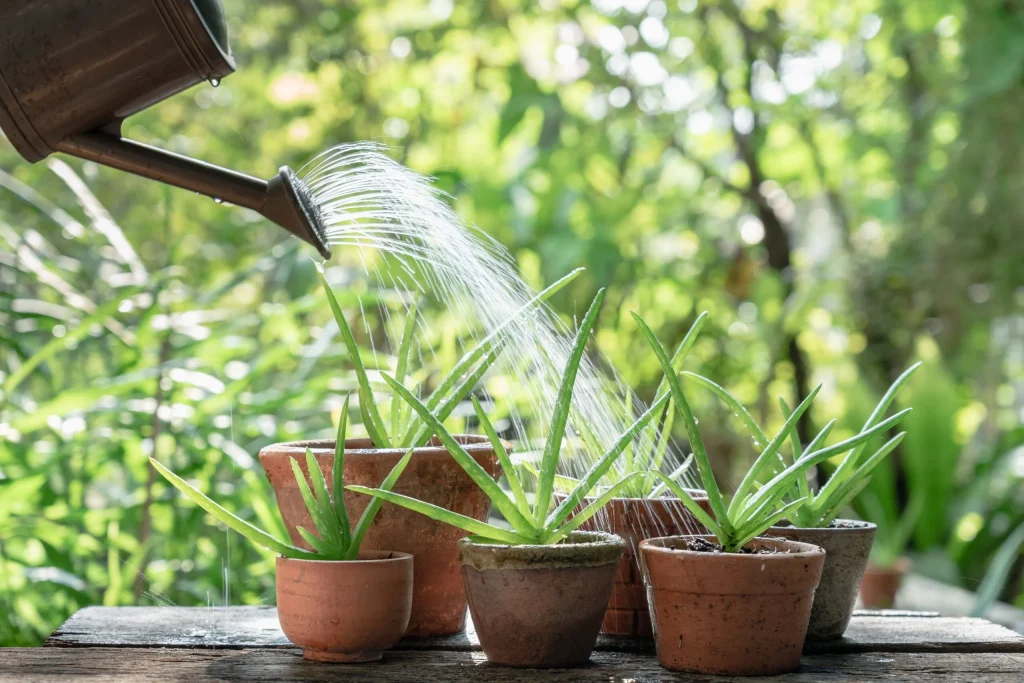How To Plant Aloe Vera

Aloe vera is a hardy, low-maintenance succulent known for its medicinal and skincare benefits. Growing aloe vera at home is simple, whether you’re planting it in a pot or directly in the ground. With the right conditions, aloe vera can thrive and provide a steady supply of soothing gel for burns, cuts, and skincare. Here is how to plant aloe vera.
Choosing the Right Aloe Vera Plant
Aloe vera can be grown from seeds, but the easiest and fastest way to plant it is by using an offset or “pup” from a mature aloe plant. These small offshoots grow around the base of an established plant and can be removed and replanted.
Selecting the Right Soil and Pot
Aloe vera requires well-draining soil, as excess moisture can cause root rot. A cactus or succulent potting mix is ideal. If you’re making your own mix, combine regular potting soil with sand or perlite for improved drainage.
If planting in a container, choose a pot with drainage holes to prevent water from pooling at the roots. A wide, shallow terracotta pot is best, as it allows the soil to dry more evenly.
How to Plant Aloe Vera
- Preparing the Pup – If using an aloe pup, gently separate it from the mother plant using a clean knife, ensuring it has some roots attached. Let it dry for a day or two to allow the cut to heal, reducing the risk of rot.
- Planting in a Pot – Fill the pot with well-draining soil, then make a hole in the center. Place the aloe pup in the hole, covering the roots with soil while keeping the base of the plant above the soil surface. Lightly press the soil around the base to stabilize it.
- Planting in the Ground – Choose a sunny location with sandy, well-draining soil. Dig a shallow hole and place the aloe pup inside, ensuring the roots are covered but the leaves remain above the surface.
Caring for Aloe Vera
- Watering – Aloe vera is drought-resistant and requires minimal watering. Water only when the soil is completely dry, about once every two weeks. Avoid overwatering, as this can lead to root rot.
- Sunlight – Aloe vera thrives in bright, indirect sunlight. If grown indoors, place it near a sunny window. If outdoors, provide partial to full sunlight, but avoid extreme heat that can scorch the leaves.
- Temperature – Aloe vera prefers warm conditions between 15–30°C (59–86°F). If temperatures drop below 10°C (50°F), bring potted plants indoors to prevent damage.
- Fertilizing – Aloe vera doesn’t need frequent fertilizing. Feeding it with a diluted cactus or succulent fertilizer once in the spring and summer is sufficient.
Common Issues and Solutions
- Brown or yellow leaves – This may indicate overwatering. Let the soil dry out before the next watering.
- Drooping leaves – Can be caused by insufficient sunlight or poor drainage. Move the plant to a sunnier location or repot in well-draining soil.
- Mushy roots – This is a sign of root rot due to excessive moisture. Remove affected roots and repot the plant in dry soil.
Harvesting Aloe Vera Leaves
Once your aloe vera plant is mature, you can harvest its leaves for their gel. Cut an outer leaf close to the base, let the yellow sap drain, and then extract the clear gel for topical use.
Also Read: How To Plant A Litchi Tree
